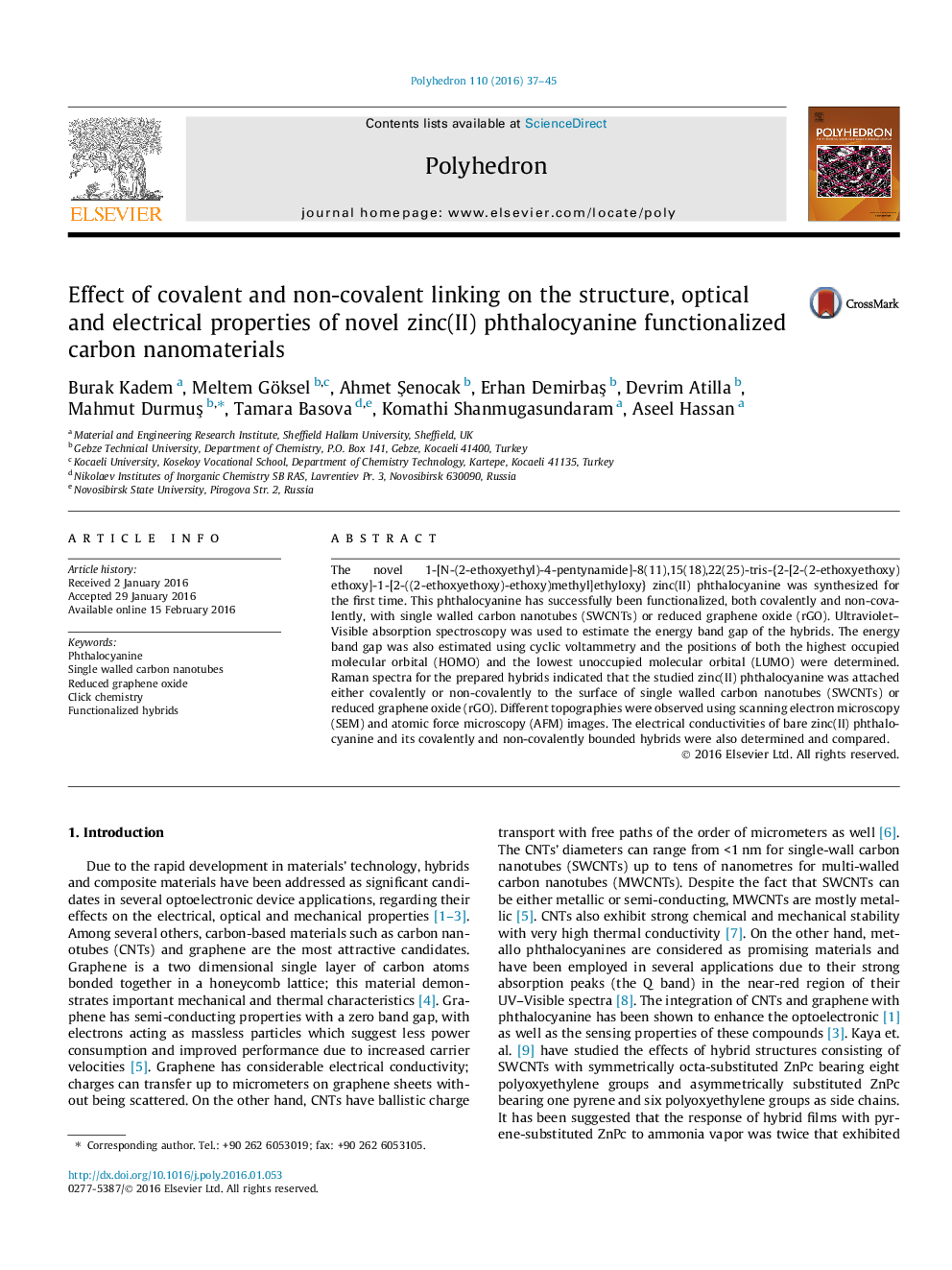| Article ID | Journal | Published Year | Pages | File Type |
|---|---|---|---|---|
| 1335588 | Polyhedron | 2016 | 9 Pages |
The novel 1-[N-(2-ethoxyethyl)-4-pentynamide]-8(11),15(18),22(25)-tris-{2-[2-(2-ethoxyethoxy)ethoxy]-1-[2-((2-ethoxyethoxy)-ethoxy)methyl]ethyloxy} zinc(II) phthalocyanine was synthesized for the first time. This phthalocyanine has successfully been functionalized, both covalently and non-covalently, with single walled carbon nanotubes (SWCNTs) or reduced graphene oxide (rGO). Ultraviolet–Visible absorption spectroscopy was used to estimate the energy band gap of the hybrids. The energy band gap was also estimated using cyclic voltammetry and the positions of both the highest occupied molecular orbital (HOMO) and the lowest unoccupied molecular orbital (LUMO) were determined. Raman spectra for the prepared hybrids indicated that the studied zinc(II) phthalocyanine was attached either covalently or non-covalently to the surface of single walled carbon nanotubes (SWCNTs) or reduced graphene oxide (rGO). Different topographies were observed using scanning electron microscopy (SEM) and atomic force microscopy (AFM) images. The electrical conductivities of bare zinc(II) phthalocyanine and its covalently and non-covalently bounded hybrids were also determined and compared.
Graphical abstractA novel asymmetrically substituted zinc(II) phthalocyanine dye and its hybrid materials prepared with single walled carbon nanotubes (SWCNTs) or reduced graphene oxide (rGO) have been studied.Figure optionsDownload full-size imageDownload as PowerPoint slide
